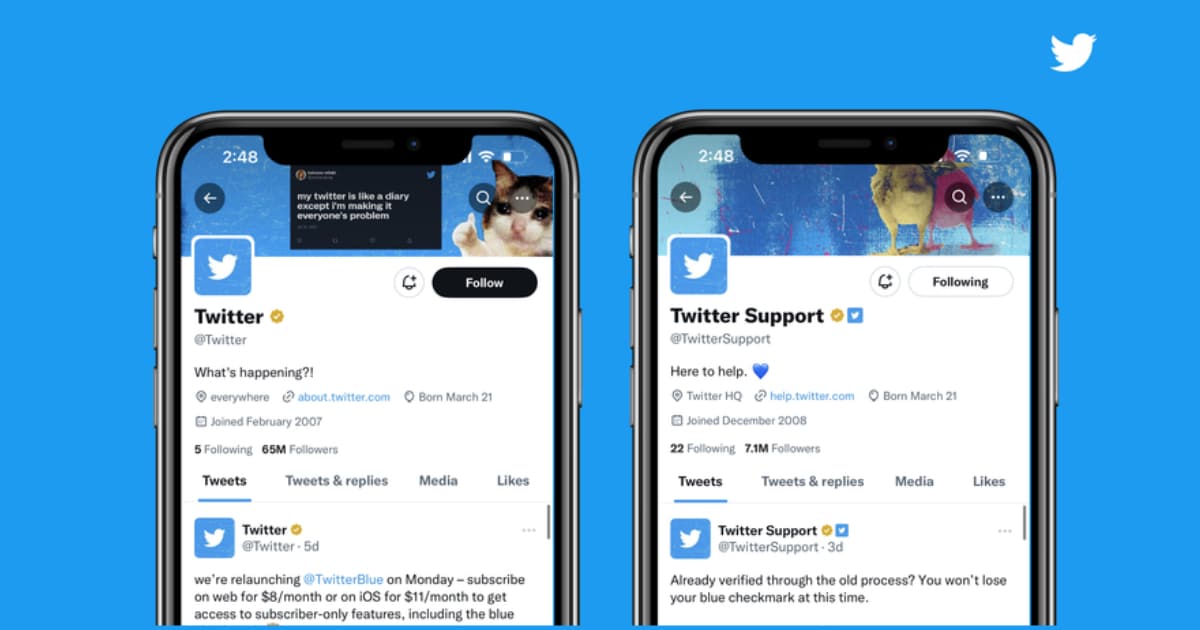Twitter has announced a major change to its verified account system, which is set to begin on April 1. The company is ditching legacy verified checkmarks in favor of Verified Organizations. In addition, the social media platform has revealed that only users who pay for Twitter Blue will be able to receive the blue checkmark that indicates an account’s notability or importance.
This decision comes after years of using the blue checkmark to verify the identities of public figures and important individuals, which has been increasingly undermined by scammers who have faked verified accounts.

Twitter Verified Organizations to launch on April 1
The introduction of paid-for checkmarks immediately led to an increase in fake accounts, which meant that the blue checkmark came to mean nothing other than the fact that the user had subscribed to Twitter Blue. Twitter subsequently canceled the paid option and attempted to introduce a new system of “official” checkmarks, but this too has now been discontinued.
Despite this, Twitter is still offering a verified account service for companies, which it calls Verified Organizations. This service costs $1,000 per month and gives businesses and non-profit organizations either a gold or grey checkmark, depending on their type of business. However, the verification process for this service is minimal, with only a matching Twitter account, email address, and website domain required.

The requirements for Twitter Blue verification are even less stringent than for Verified Organizations, with only payment and a phone number necessary to obtain the mark. This has led to concerns about the legitimacy of verified accounts on Twitter, as the once-esteemed blue checkmark has become increasingly meaningless.
It remains to be seen how the removal of the legacy verified program and the introduction of Verified Organizations will affect the overall trustworthiness of Twitter’s verification system. While the platform claims to be creating “the most trusted place on the internet for organizations to reach their followers,” many users remain skeptical about the effectiveness of these verification methods.
The changes to Twitter’s verification system come at a time when the platform is facing increased scrutiny over its handling of misinformation and the spread of fake news. With the rise of deep fakes and other forms of disinformation, it is more important than ever for social media platforms to have effective systems in place to verify the identities of their users and prevent the spread of false information.
The move towards paid-for verification and the introduction of Verified Organizations may help to address some of these issues, but it remains to be seen whether they will be effective in practice.